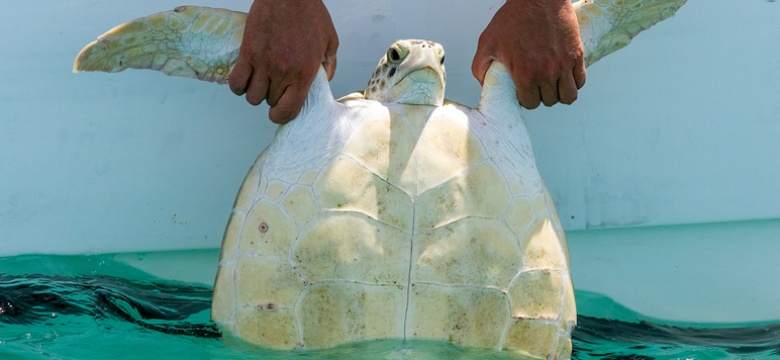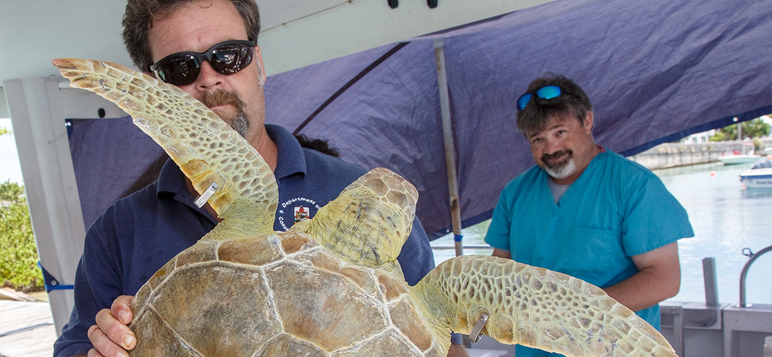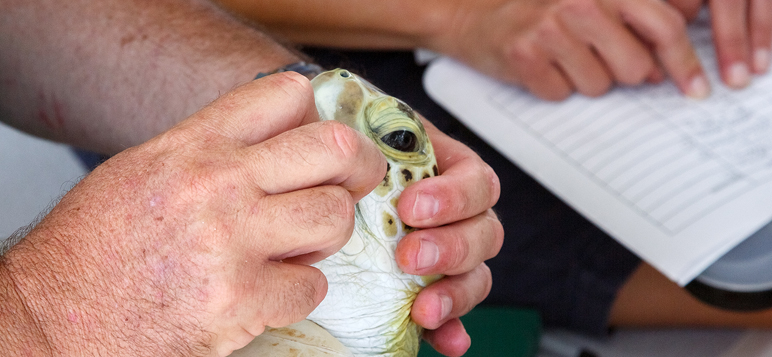
Today, the Ministry of the Environment returned 38 green turtles collected from the high marine traffic area of the Great Sound back to western waters. A further eight of the smallest green turtles and three hawksbill turtles were released inshore in the East End in mid June, and it is expected they are now making their way west.
When the sea turtles were collected in late May, they were measured, weighed, photographed, micro-chipped and numbers were painted on their shells. It is estimated that the turtles ate 50 or more heads of lettuce per day while enclosed near the Bermuda Aquarium, Museum and Zoo (BAMZ). They were fed at the deepest point of the enclosure by submerging trays of lettuce arranged to mimic sea grass beds. In this way, human interaction was minimized to prevent habituation,
“While protection of the turtles from heightened marine traffic was the principal aim, we were able to closely monitor this group of green sea turtles. That has added information to our database that some turtles are dealing with very high parasite burdens,” said Dr. Ian Walker, Principal Curator and Veterinarian, BAMZ. “BAMZ keeps detailed records of all turtles that pass through our hands, whether this group or the turtles brought to us by members of the public for treatment or necropsy. Based on all our data, we think that disease resulting from high parasite burdens is becoming increasingly common. As high parasite burdens, often related to malnutrition, is now one of the leading causes of turtle morbidity and mortality in Bermuda, BAMZ is actively pursuing research to better understand and deal with this issue.”
Before release, the turtles were weighed and had flipper tags attached. A very small DNA sample was taken from each individual turtle before groups of turtles were taken by boat to the area where they were first collected in the Great Sound. This is so that these individual turtles can be readily identified if they are returned to BAMZ.
The turtles were transported on their backs on beds made from swimming noodles to keep them from moving. They were kept cool and hydrated in transit.
Now that they are back in the Great Sound, their purpose-built, temporary enclosure will be dismantled.
Photos:(holding turtle) Dr. Mark Outerbridge is Wildlife Ecologist with the Department of Environment and Natural Resources
(background behind Dr. Outerbridge) Dr. Ian Walker is Principal Curator and Veterinarian at BAMZ


